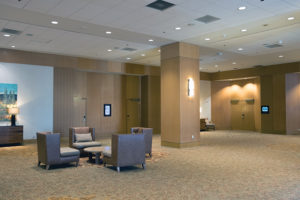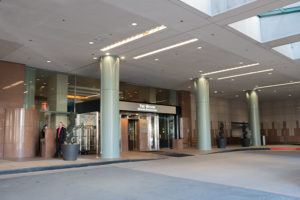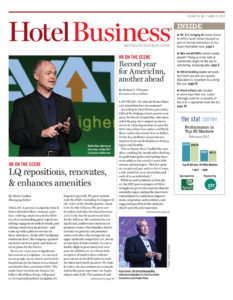NATIONAL REPORT—Upgrading to LEDs from CFLs has several benefits: LEDs are more eco-friendly; they use less energy; and they can even yield more light. While properties will more than likely benefit from the lighting update, there are several factors to ultimately consider. One of them is the way existing light fixtures will be retrofitted, and the pros/cons of how that method will impact a property.
One commercial LED company believes one common pitfall to avoid is the partial LED upgrade, which can be a very appealing option for a building owner or property manager. The installation is easy: Existing light sources are replaced with LEDs in sockets and other fixtures with removable bulbs. There are a few things to consider, however: Hoteliers are unaware of the risk factors associated with these pin-based LEDs.
“We’ve been brought into multiple projects to clean up major safety issues with these pin-based LED products,” said Matthew Sallee, director of business development and strategic marketing at Longmont, CO-based Terralux.
Terralux points to several recalls of pin-based LEDs throughout 2015 as its argument for properties to invest in high-quality LED products. One recall worth noting from early 2016: Lunera’s recall of more than 60,000 LED lamps. According to the alert published by the U.S. Consumer Product Safety Commission (CPSC), the reason for Lunera’s recall was that its product can potentially overheat, posing fire, burn and electric shock hazards. Cree recalled its LED T8 lamps late last summer, citing lamps overheating and melting as the reason. A total of 104,000 units were sold in the U.S. No injuries were reported at the time of the lighting manufacturer’s recall.

Top to bottom: Terralux upgraded the recessed light fixtures at The Westin Denver Downtown’s valet. According to the lighting company, the property has had the lighting installed for a year now with zero failures. The commercial lighting company also upgraded the property’s CFL downlights in its concourse.
This isn’t just a problem at smaller properties, however; Terralux is seeing this issue across the board, regardless of the number of rooms a property has. For example, one property Sallee visited in Washington, DC—which shall remain nameless—had been replacing screw-in incandescent light bulbs with screw-in LED light bulbs from retail chain Home Depot. “That screw-in LED product isn’t built to be put inside of a sealed fixture like a wall sconce; it’s built to be put into a table lamp,” he explained. “They were having failures all over the building. The hallways were getting dark because they put in a product that wasn’t built for the temperatures and the environment it was being put into.”
Despite several recalls over the past couple of years, others aren’t too concerned about pin-based LEDs. John Drengenberg, consumer safety director at UL, a global independent safety science company, told Hotel Business there’s no reason building owners should shy away from partial LED upgrades; however, issues could arise from human error, specifically with regard to the reconstruction of a fixture.
“Well, the reason why sometimes they would be considered dangerous is if someone doesn’t follow the rules,” he explained. “There are codes and standards that cover retrofitting light fixtures for LEDs. If it’s a situation where the fixture is rebuilt—if you go back to the original fluorescent for whatever reason—that’s where the problem could come in. Frankly, we don’t have a lot of data on it causing major fires or major safety incidents, but it can cause a problem, like a flashover or something of that type.”
In response to a question about potential dangers with partial LED upgrades, Patty Davis, spokesperson for the CPSC, provided Hotel Business this statement: “Our general recommendation is to use products that are listed by an accredited third-party certification lab and labeled for the application, and for qualified installers to closely follow manufacturers’ instructions to ensure the complete compatibility of replacement parts with existing hardware.”
Terralux provides an alternative—LED retrofit kits—designed to maximize light output. Many commercial lighting companies offer these products. “With high-quality LED, what you really end up doing is you remove the lamp holder because you don’t need to replace it for a decade, and so you can get all of that electrical gear out of the inside of the fixture, which is very easy to take out,” Sallee said. “It’s usually just a screw or a clip because these things are made to be replaced and upgraded because there are parts of it that wear out over time. What you do is you just put this LED upgrade inside of the fixture and because it’s not relying on that old electrical connection and very small form factor of a light bulb, it’s got room to spread out.” These LED retrofit kits enable the company to produce more light for less wattage, since it enables them to dissipate heat far better than a little lamp can, he explained. “High-quality LED products don’t burn out, they simply use a small amount of light over their lifetime, which, in our experience, has been between seven and 10 years.”
He added, “LED lamps simply can’t pack all this engineering and quality into their small form factor, or buy-and-replace price model.”
The longer LEDs last, the better for properties. In addition to saving the property money, longer-lasting products create an environment where guests aren’t seeing clutter in the hallway; these products essentially break the bulb cycle. “In a hotel environment, we hear over and over and over from our hotel customers that it’s really important to not have a janitor with a cart walking through the hotel and replacing light bulbs,” he said. “There’s no good time to replace a light bulb because there are always guests.” HB


